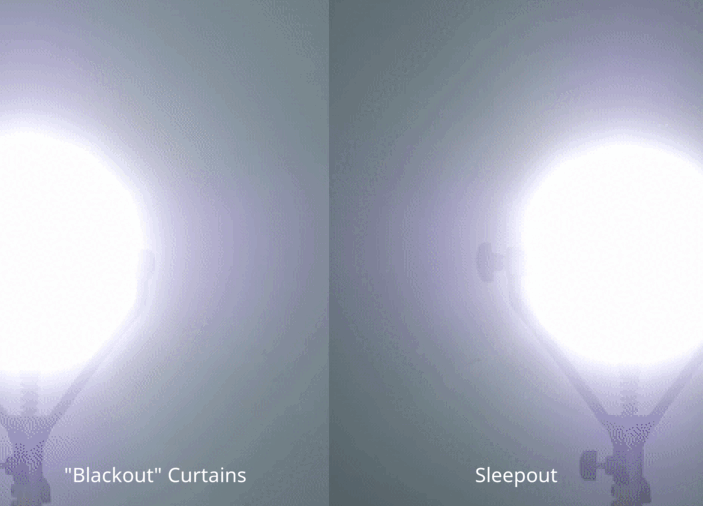Babies who only sleep when held can be a challenging experience for parents. Struggling to find the right balance between comforting their child and encouraging independent sleep, parents often feel overwhelmed and exhausted. In this blog, we will discuss the reasons why babies only sleep when held, how to help them sleep independently, and explore other alternatives to holding them.
Why Do Some Babies Only Sleep When Held?
The need for physical touch and comfort is a natural instinct for babies, deeply ingrained in their biological makeup. They are accustomed to the warmth and security of their mother's womb for nine months, where they experience constant contact and feel snugly enveloped. The presence of a caregiver, such as a parent, grandparent, or other trusted adult, provides a sense of safety and reassurance.
The Moro reflex, also known as the startle reflex, is a common cause of sleep disturbances in young babies. This primitive reflex is an automatic response to a sudden change in the environment, such as being put down or experiencing a loud noise. When infants feel this change, their arms and legs may extend involuntarily, causing them to startle awake and disrupt their sleep. Holding a baby helps to suppress the Moro reflex, as their body feels supported and less likely to react to environmental changes. As a result, babies are more likely to sleep soundly and peacefully when held.
Why Does Your Baby Wake Up When Put Down?
-
Change in Temperature and Environment: Moving a baby from the warmth and security of a caregiver's arms to the cooler, less familiar space of their crib or bassinet can be a jarring experience. This sudden shift can disrupt their sleep, making it harder for them to settle back down.
-
Absence of Soothing Sensations: A baby misses the caregiver's heartbeat or the gentle rocking motion they're used to when held. The lack of these comforting sensations can contribute to them waking up.
-
Adaptation to Constant Motion: Babies are accustomed to constant motion in the womb as their mothers move around throughout the day. The stillness of the crib or bassinet can be unsettling, causing difficulty in falling back asleep without the comforting movement.
-
Sleep Cycles and Arousal States: Babies have shorter sleep cycles, lasting approximately 40-60 minutes, and spend more time in lighter sleep stages. They are more prone to waking up during these light sleep stages, making it difficult for them to stay asleep when placed down, especially if they are not fully settled into a deep sleep.
How to Get Your Baby to Sleep During the Day Without Being Held
-
Establish a Consistent Nap Routine: Create a predictable schedule based on your baby's age and sleep needs. Consistency can help your baby understand when it's time to sleep.
-
Set the Stage for Sleep: Ensure the room is quiet and dark. Using high-quality blackout curtains can block out any light that may interfere with sleep. Additionally, consider incorporating soothing sounds, such as white noise or soft music, to help your baby relax.
-
Use a Swaddle or Sleep Sack: These items can mimic the feeling of being held by wrapping your baby snugly and securely. This sensation can help your baby feel secure, reduce the startle reflex, and promote better sleep overall.
-
Gradually Reduce Holding: Start by holding your baby until they're drowsy but not fully asleep, then gently place them in their sleep space. Over time, decrease the amount and duration of holding to help your baby become more comfortable with falling asleep on their own.
-
Introduce Self-Soothing Techniques: Use tools such as a pacifier, lovey, or soft toy to provide comfort and a sense of security. These items can encourage your baby to self-soothe and settle into sleep independently.
Alternatives to Holding Your Baby to Sleep
-
Establish a Consistent Nap Routine: Create a predictable schedule based on your baby's age and sleep needs. Consistency can help your baby understand when it's time to sleep.
-
Set the Stage for Sleep: Ensure the room is quiet and dark. Using high-quality blackout curtains can block out any light that may interfere with sleep. Additionally, consider incorporating soothing sounds, such as white noise or soft music, to help your baby relax.
-
Use a Swaddle or Sleep Sack: These items can mimic the feeling of being held by wrapping your baby snugly and securely. This sensation can help your baby feel secure, reduce the startle reflex, and promote better sleep overall.
-
Gradually Reduce Holding: Start by holding your baby until they're drowsy but not fully asleep, then gently place them in their sleep space. Over time, decrease the amount and duration of holding to help your baby become more comfortable with falling asleep on their own.
-
Introduce Self-Soothing Techniques: Use tools such as a pacifier, lovey, or soft toy to provide comfort and a sense of security. These items can encourage your baby to self-soothe and settle into sleep independently.

Happy Sleeping, For You and Your Baby.
In summary, understanding why babies may only sleep when held is crucial to finding alternatives and helping them learn to sleep independently. Factors such as the need for physical touch, the Moro reflex, sleep associations, and environmental changes all play a role in this behavior. To support your baby's transition to independent sleep, consider establishing a consistent nap routine, using swaddles or sleep sacks, and introducing self-soothing techniques.
To help your baby sleep through the night, consider adding the most recommended blackout curtain by sleep specialists in North America! Use code WELCOME10 for $10 off, and give your baby the gift of a restful night's sleep.






